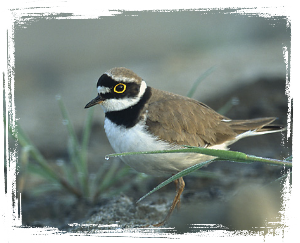Introduction of migratory birds
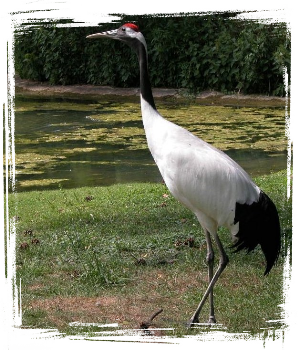 |
Red-Crowned Crane (Grus japonensis, gruidae family)
Around 150 cm. Its features include a long beak, a long neck, and long feet. Adult red-crowned cranes show their biological maturity by the red crown. The feathers are white, except for the neck and flight feathers. Photo: https://commons.wikimedia.org/w/index.php?curid=465825 |
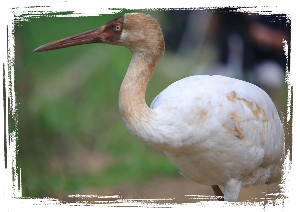 |
Siberian Crane (Grus ieucogeranus, gruidae family)
Around 140 cm. A kind of large water bird. Before reaching maturity, the plumage is yellow on the head and neck and dingy brown on the body. Adults’ feathers are white except that the primary flight feathers, primary coverts, and bastard wings are black. Photo:Qui, Mingyuan. |
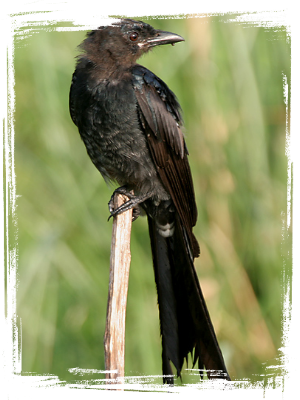 |
Black Drongo (Dicrurus macrocerus, dicruridae family)
Around 30 cm. It coats its whole body in glossily black feathers with long, split tail feathers. Besides the feathers, its short, downward-pointed beak, feet, and eyes are also black. Both male and female share the same color of feathers. Bronzed drongos, coated with black and blue-green gloss, are a little smaller than black drongos.
Photo: https://commons.wikimedia.org/w/index.php?curid=2820554 |
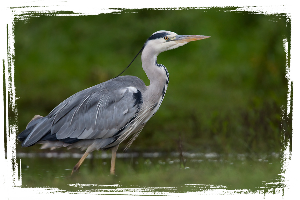 |
Heron (Ardea cinera, ardea family)
Around 84 to 102 cm and 155 to 195 cm with its wings open. Mainly coated with grey feathers and white ones on its underparts with some black on the flanks. A mature heron, with yellow irises, has a black stripe that extends from the eyes to the crest. The sharply-pointed beak is yellow-green and the feet are brown. A young heron’ head and neck are dark grey but not black. Photo: https://commons.wikimedia.org/w/index.php?curid=13341415 |
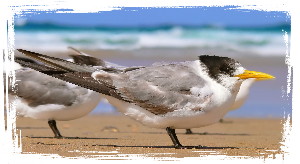 |
Tern (sternidae family)
About 28 cm long. Terns are pale grey above and white below, with a contrasting black cap to the head. Their feet appear red and the beak yellow in summer while both appear brown in winter. They can be found by coasts, the estuaries, and fish farms where a sea is nearby. Photo:https://commons.wikimedia.org/w/index.php?curid=2843842 |
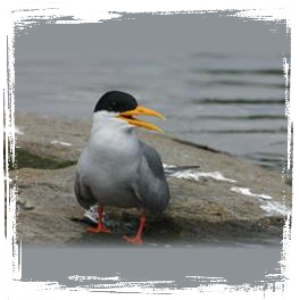 |
Whiskered Tern (Chlidonias hybrida, sternidae family)
Whiskered terns are mostly grey above and dark grey below, with a black hood to the head. Their beak and feet appear dark red during summer and black in winter. Photo: https://zh.wikipedia.org/wiki/File:Bird_template.svg |
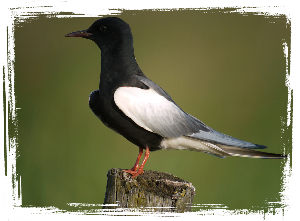 |
White-Winged Tern (Chlidonias leucoptera, sternidae family)
Around 24 cm. White-winged terns are a kind of small tern. They have a black head and belly, with a pale grey back. Their wings are mainly white with inner greyish feathers. Photo: https://commons.wikimedia.org/w/index.php?curid=18404444 |
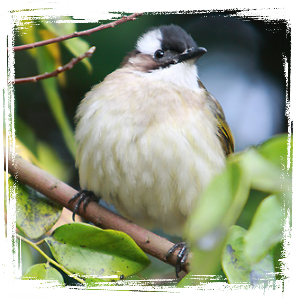 |
Chinese Bulbul (Pycnonotus sinensis, pycnnotus family)
Chinese bulbuls are yellowish-green above and have a greyish-brown chest and awhite belly. They are distinguishable by the white feathers that extend from the eyes to the back of the head. Young bulbuls have greyish brown head and olive back. They also have a greyish brown chest and a greyish white belly. Their sexes are hardly identical in appearance, except that adult birds usually have darker feather on the chest. Photo: https://zh.wikipedia.org/wiki/%E7%99%BD%E9%A0%AD%E9%B5%AF#/media/File:Pycnonotus_sinensis_(bird).jpg |
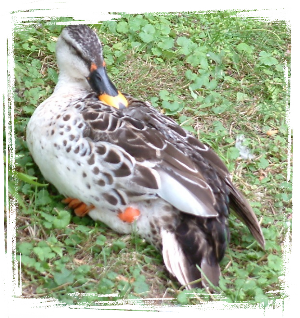 |
Spot-Billed Duck (Anas poecilorhyncha, Anatidae family)
Around 60 cm. The male duck is rather larger and their feathers are more conspicuous. The color of feathers looks like a green speculum above and slightly grey white below. The bill is black with a yellow front part. The feet are orange red. Photo: https://commons.wikimedia.org/w/index.php?curid=192055 |
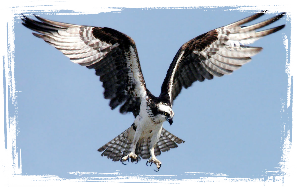 |
Osprey ( Pandion haliaetus, Pandionidae family)
The osprey, also called fish eagle, sea hawk, or river hawk, can be found almost any place where |
 |
Black-necked Stilt (Himantopus mexicanus, Recurvirostridae family)
The black-necked stilt measures around 35 cm and features a pair of pink feet and a long black Photo: https://commons.wikimedia.org/w/index.php?curid=134331 |

